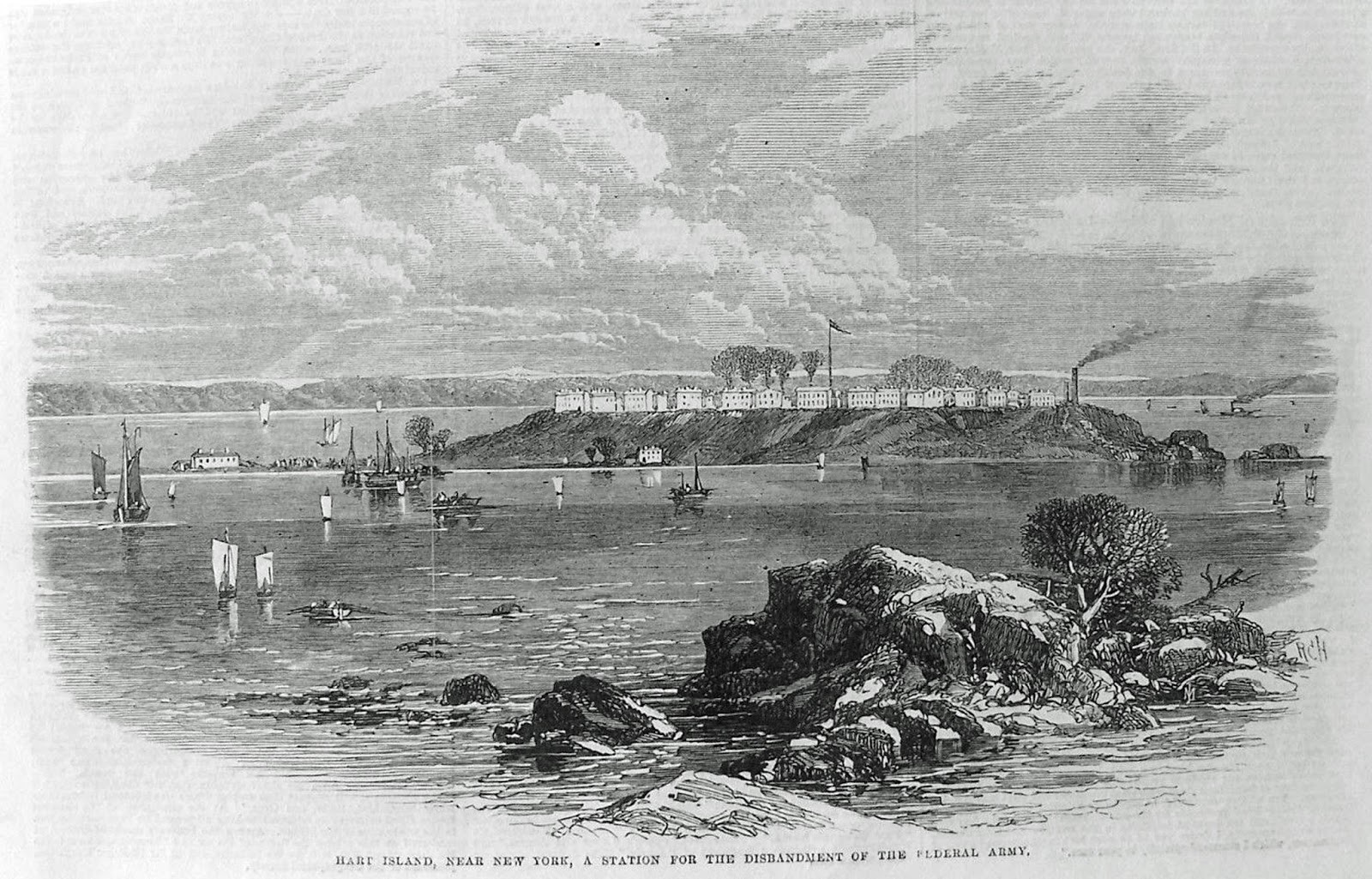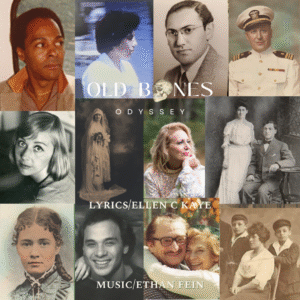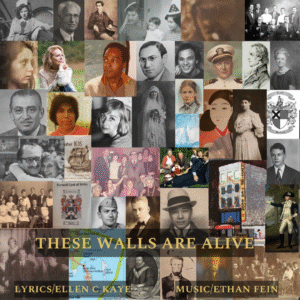
our history
of hart island
& phoenix house
(1974 – 1976)



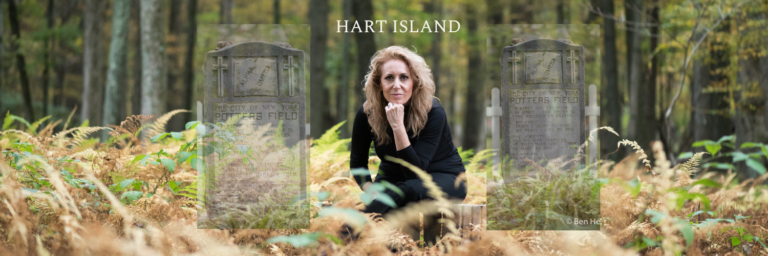
“In a series of Dickensian twists I ended up semi-incarcerated on Hart Island off the Bronx coast, in the waters of Pelham Bay. That’s where the Phoenix House facility that I was placed in was located. A long term drug rehab program, though I was not a drug addict. It was roughly 12 miles, as the crow flies, from where I grew up on 57th Street to the island, but it was like being in another country. A small and isolated piece of land, with a rough and tumble history, lying in the waters of the Long Island Sound, Hart Island became my home for almost 2 years.
Though my team and I are not historians, we have tried our best to remain true and accurate throughout this post.”- Ellen Kaye
the history

8000 BCE – The peoples of Lenape Tribal Nation were living on the Northeast Coast. For thousands of years their people fished and hunted on Hart Island.
1654 – Thomas Pell buys a large tract of land from the Siwanoy Indians, including what is now known as Hart Island.
1774 – Pell’s heirs sell the land to Oliver DeLancey.
1776 – The name Hart Island first appears on maps.
1863 – The earliest known recorded mustering on the island of Union recruit units in the Civil War.
1864 –
April, 1864 – The 31st United States Colored Troops Regiment, one of three in New York, is organized on the island.
The Hart Island regiment will see action at the fall of Petersburg on April 2, 1865. It will pursue Lee’s army from April 3 through April 9 and be at Appomattox before, during and after the Confederate surrender on April 9, 1865. These soldiers will give their life for the Union.
November 1864 – Construction of a prisoner-of-war(POW) camp on Hart Island begins.
Twenty Union Army soldiers who died before 1865 were buried in a small burial ground on the island.
1865 – The first Confederate POW’s arrive on Hart Island.
1868 – The City of New York purchases Hart Island for use by the Department Of Corrections to operate a city cemetery.
April 20, 1869 – Twenty-four year old Louisa Van Slyke was the first person to be buried in the island’s forty-five acre public graveyard. The cemetery then became known as “City Cemetery” and “Potters Field.” The classic definition of potters field is a burial place for unknown, unclaimed, or indigent people.
1870 – The Yellow Fever Epidemic hits New York. The sick are quarantined on Hart Island.
1875 – Mass burials begin on Hart Island.
1877 – The New York City Army Reserve constructs a monument to honor the Union Civil War soldiers and sailors interred on the island.
1885 – The Pavilion, a women’s psychiatric hospital, opens on Hart Island.
1895 – A prison workhouse is established for drug addicts and aged or infirm inmates. It will remain in use until World War II.
1905 – The asylum is turned into a Reformatory for Misdemeanants, more generally referred to as the reform school for “vicious boys.”
1916 – The remains of Union troops who died on the island are removed to the Soldiers Cemetery in the Bronx.
1925 – Solomon Riley, an African American millionaire, purchases a section of the island to build a “Negro Coney Island.” He built a dance hall, a two hundred foot boardwalk, a bathing pavilion and boarding houses before the City condemned the project. The City took the property back and Mr. Riley sued for compensation. The Court ordered the City to pay him $144,000.
1940’s – The island is used as a disciplinary barracks for the Navy, Coast Guard and Marines.
1941 – The remains of another group of Civil War dead are disinterred and removed to a cemetery in Queens.
1942 – WWII arrives on the shores of America when three Nazi sailors surface in a U-Boat near Long Island and are taken as POWs to Hart Island.
1946 – Hart Island is returned to the Dept Of Corrections and the jail is reactivated.
1948 – Inmates erect a thirty foot high “peace” monument, in the center of the burial site to the north, to honor the unknown dead.
1955 – United States Army Air Defense Command opens the only missile site in the metro New York area, NY-15, and places missile launchers in silos on the north end of the island.
1967 – Phoenix House, a drug and rehabilitation center, opens on the island with funds from the New York State Narcotics Addiction Control Commission and the New York City Narcotics Coordinator. The program was made possible due to a 1967 Penal Law that allowed judges to mandate narcotics addicts to three years of treatment in lieu of incarceration for crimes committed in New York State. Phoenix House remained on the island until 1976 when it closed its Hart Island location.
Late 1960’s until early 1970’s – Phoenix House holds festivals and public concerts on the island with artist Janis Ian and the band The Velvet Underground among others.
1982 – Housing opens for a small contingent of inmates from the Rikers Island jail to bury the unknown dead.
1985 – The first seventeen victims of AIDS were quarantined and buried on Hart Island. Subsequently, the number of AIDS burials on Hart Island would reach into the thousands, making it perhaps the single largest burial ground in the country for people with AIDS.
1991 – Inmate housing ends but cemetery operations continue with day work units of prisoners from Rikers Island jail.
1994 – Melinda Hunt founds the Hart Island Project, a 501-(c)-3 Charitable Organization, which has been in the forefront of improving access to the island to families whose loved ones have been buried on the island.
2018 – The Hart Island Project maps the entire island using a drone and embeds geotiffs into over 68,000 profiles listed in the Traveling Cloud Museum. This information now displays on their homepage https://www.hartisland.net/.
November 14, 2019 – the New York City Council passes legislation to create a public park where citizens can freely visit graves.
December 4, 2019 – NYC Parks and Recreation assumes jurisdiction, ending 150 years of penal control over city burials. NYC Parks takes over managing Hart Island by July 1, 2021.
This transfer comes directly as a result of advocacy by The Hart Island Project, their creation of a database of recent burials and their Traveling Cloud Museum storytelling platform. Burial information about each person includes a clock that measures the period of time that they have been buried in anonymity until someone adds a story, image, epitaph, sound or video.
April 3, 2020 – Inmate labor ended on Hart Island after a century and a half.
2020 – Potters Field is used to bury victims of Covid 19.
April 6, 2020 – contracted labor was hired to conduct the burials. Families of people who died of COVID-19 were asked to consent to a city burial. To give families additional time to decide or make alternative arrangements, the New York City medical examiner stored their bodies in freezer trucks for months. Burial records indicate that New York City buried people who died in April five or six months after being stored in freezer trucks.
The Hart Island Project COVID-19 Initiative is helping the larger community to locate the gravesites of people they knew and support families and friends of people buried in the City Cemetery. Through engaged storytelling the Initiative hopes to enlarge the meaning of this landscape and make it an inclusive rather than shameful resting place. https://www.hartisland.net/covid_initiative
Hart island is a mysterious place and even though I lived there, I don’t feel like I know it at all. I’ve started studying its history and found that it’s even more mysterious than I imagined.
For me, it was home for nearly two years when I lived at Phoenix House, a therapeutic community that opened one of its units on the island in 1966 and closed up shop soon after I left in 1976.
From 1974-1976. I was fourteen when I got there, sixteen when I left.
The staff was made up mainly of former addicts and graduates of the program. Most of the residents were adults, although there was a small minority of teenagers, including me. Some people were there on plea deals, beating Federal time, others were trying to beat heroin. Some people arrived still addicted to methadone, a very painful drug to kick.
We were an Island of lost souls.
Pretty much everyone in Phoenix House had suffered truly awful experiences, some in prison, some living in the streets, raised by addicts, abandoned as children, living in poverty – they were a tough group so it took an awful lot to wear down their defenses. The Marathon is built to do that, to break you down to your core. All kinds of methods were used.
It was a grim place. No one wanted to be there, but for some people it was a much better place than where they could have been – I certainly felt that way myself.
In June 1976 I finished the program at Phoenix House. -Ellen kaye

Potter's Field
Over one million people have been buried on Hart Island, although not all of them have been homeless, unclaimed or indigent. Known as Potter’s Field, it is the largest tax funded cemetery in the United States and has been accepting burials since the first Union soldiers were buried on the island during the Civil War.
Since Hart Island’s cemetery is a public cemetery, anyone who dies in NYC has the right to be buried there at the city’s expense. Over the years there have been some notable burials, including playwrights, artists, novelists, and composers. Until 1913 unknown or unclaimed burials were in single plots and mass graves were used for identified adults and children. Since 1913, all burials have been in mass graves.
In 1994, Melinda Hunt founded the Hart Island Project, a 501-(c)-3 Charitable Organization, which has been in the forefront of improving access to the island to families whose loved ones have been buried on the island. The Project has fought for access to burial data and has assisted thousands of families in obtaining information about their deceased friends and relatives. The Hart Island Project was responsible for digitally mapping the mass graves on the island and created an interactive map with GPS data called the “Traveling Cloud Museum” which assists families in obtaining the location of their loved ones buried on the island. The Project assists families in arranging visits to the island with the NYC Parks Department, gaining access to burial records and has been advocating for increased transparency of New York City burial procedures as well as for a cost effective, environmentally friendly, aesthetic comprehensive burial plan for future burials on the island while providing the respect and solemnity deserving those buried on the island. – Alan Joseph
Please click here for more information about the Hart Island Project: https://www.hartisland.net/
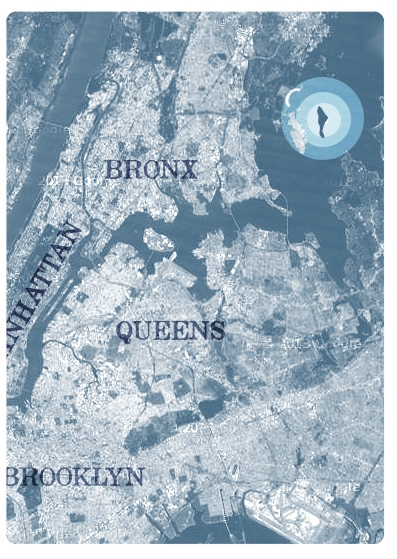
Map With Hart Island
In the days when I lived in the Bronx I didn’t know my ancestors had settled there hundreds of years ago. What would my 14 year old self have thought of that? It might have been a real source of strength. Maybe a kind of coming home. A new adventure inside some very old footsteps.
river styx -the story & the song
“River Styx brings my time in Phoenix House on Hart Island to life.” – Ellen Kaye
River Styx brings my time in Phoenix House on Hart Island to life. I lived there for almost two years. From 1974-1976. I was fourteen when I got there, sixteen when I left. It’s a part of my life that I haven’t talked about a lot. I did a one-women show about it a long while back, in my thirties. It’s always been a difficult subject. Putting it into song turned out to be easier for me. Easier to remember the people I knew there, to remember how we felt. To bring it all out into the open.
With River Styx I’m tackling my own story, the stories of abandoned people, of what it’s like to be left behind. That’s a story that America has trouble telling and even more trouble listening to. This song is about people that we should care about that we cannot see. The people that were with me on the island, the people that made it out to have better lives, the people who never made it out, that are lost to us all.
river styx - the song
video clips of river styx from the live show
River Styx Playlist

3:22

3:37

1:28

1:31

0:43

0:27
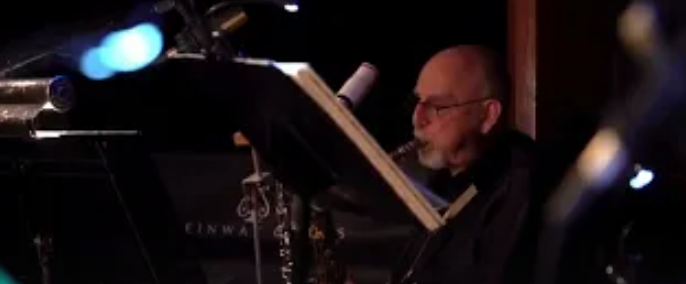
0:57
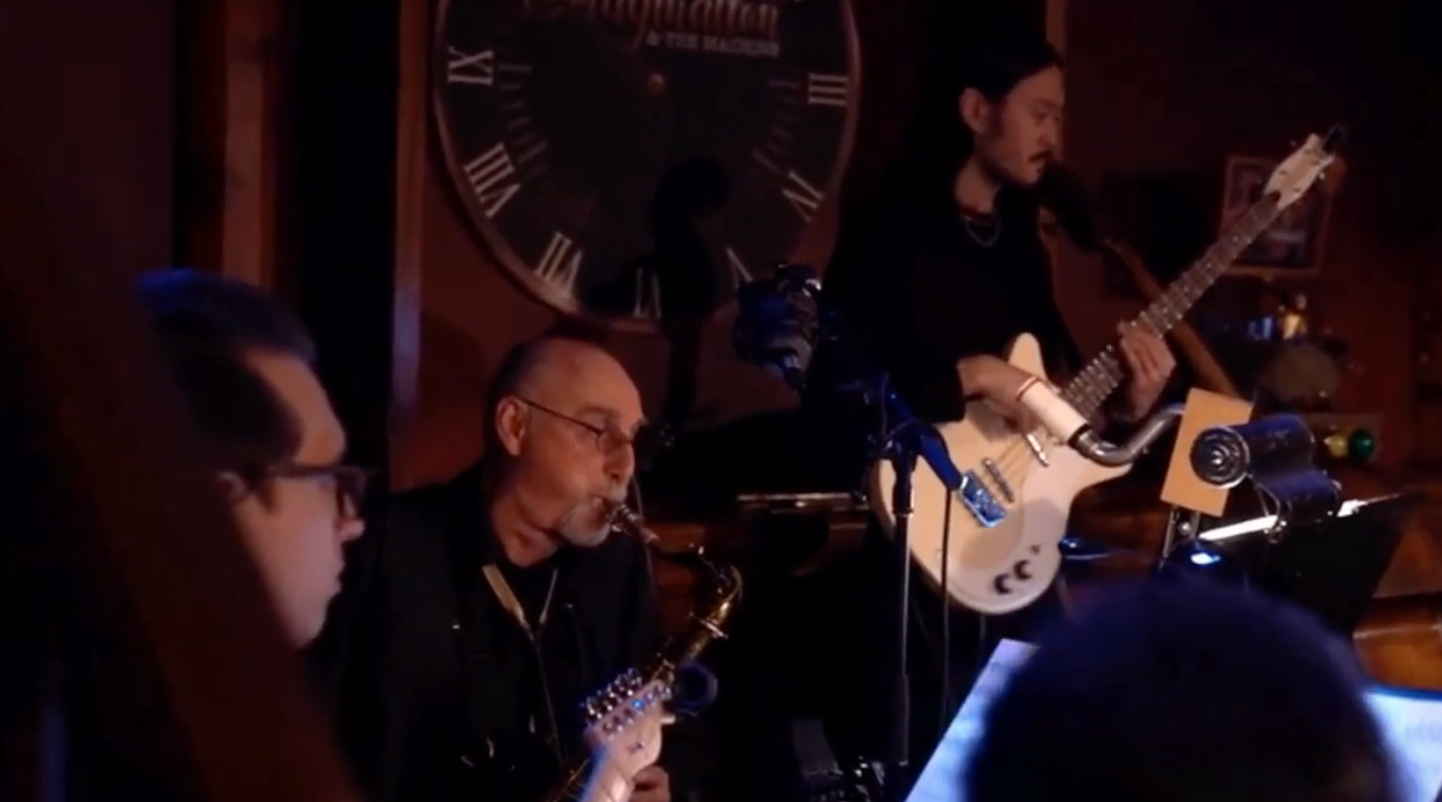
0:46

interviews with ellen about writing river styx
River Styx Interviews Playlist

2:09

1:01

0:39

1:21
full transcript of interviews below
Take #1:
I wrote River Styx to tell the story of how I spent almost two years on Hart Island in Phoenix House from 14 years old to 16 years old. It’s a part of my life that I haven’t talked alot about. I tried to do a one-women show about it awhile back in my 30’s. But its always been a difficult subject for me and I have found that songwriting is a really great way to talk about buried things and that’s what I’m doing in River Styx, about the people that are buried in Potters Field, about the people that were with me on Hart Island, some of which are very much alive and to tell….
Take #2:
I wrote River Styx to tell the story of the two years that I spent semi-incarcerated on Hart Island off the coast of the Bronx in Phoenix House which was a drug rehabilitation center, I actually wasn’t a drug addict and I was 14 years old and it was very strange place to be and I was there for almost two years. I graduated from the program, if thats actually technically true, I’m not sure because I don’t know if there were graduations, but I left there when it was time to leave. And I found that it’s always been a difficult topic for me and that writing this song enabled me to kind of unlock the memories of the people, of the place, of the time, and to talk about buried things. And there’s people,many, many, many people buried on Hart Island in Potter’s Field. And then there are the people that are buried in my thoughts. That’s what the song is about.
I want people to feel the sadness and the longing that I felt when I was on the island. I can’t speak for the other people there, but I can only imagine, and most of them were older than me and I’m sure it was even harder to be there when you’re older, things are harder when you’re older. So, I want people to think about the abandoned people, and what it’s like to be left behind. I think that’s a story that America has trouble telling and even more listening to. And I hope that this song joins those ranks of stories about people that we should care about that we cannot see.
“On an island in the bay, we can see the far off lights,
We’ll all escape one day, some in spirit, some in flight”
Those are the lyrics that conjure up that time to me and I feel are possibly the most powerful in the song. I’m not sure there’s others that are more compelling, but I like the mystery of those lines.
Take #1:
Well, living on an island is highly evocative, so it’s not hard to write about having lived on an island that many people have never been to. I think it’s like a few miles as the crow flies from the city where I was born. It was a very mysterious, gothic place.
Take #2:
Well, I think the island definitely is the most evocative piece. It was strange to be living on an island and it was strange to see that island from off the coast. Hart island is a mysterious place and even though I lived there, I don’t feel like I know it and I’ve been studying its history and I found out that it’s way, way more mysterious than I had any idea of. So, definitely, the island is the main character in my mind when I’m writing that song.
haunted hart -the story
“Haunted Hart is about a man I loved when I lived on Hart Island in 1974. “-Ellen Kaye
“Haunted Hart is about a man I loved when I lived on Hart Island in 1974. His name was Hector. His nickname was Dante. I want to remember him. Not let him be forgotten. These are my memories of him. And the ghosts of Potter’s Field.”
Sources And Inspirations
- The Hart Island Project
- “The Hart Island Project assists families and individuals with limited resources in accessing the history and public information concerning burials on Hart Island, and increases public awareness, through engaged storytelling and creative projects.”

listen to the old bones odyssey original songs below
The songs Old Bones Odyssey and These Walls Are Alive are the main themes of our entire project. They are inspired by the people that fill our stories.




